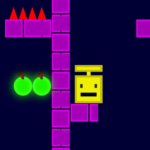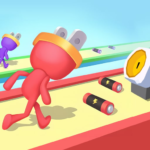
Core Keeper
All trademarks belong to their respective owners.
Advertisement
Popular Now
Core Keeper is a sandbox adventure game developed by Pugstorm and published by Fireshine Games. Since its early access release in March 2022, it has garnered a dedicated community of players drawn to its blend of exploration, survival, crafting, and base-building. Set in a mysterious underground world, Core Keeper challenges players to dig, mine, build, and uncover the secrets of a massive ancient core buried in the heart of a procedurally generated cavern. This article will explore the game’s systems, progression, artistic style, and multiplayer mechanics while highlighting the strengths and weaknesses that shape the Core Keeper experience.
Latest Posts
Latest Reviews
-
 99 Nights In The Forest Roblox
Among the wave of horror-themed survival games on Roblox, 99 Nights In The Forest carves out a unique place by combining psychological tension, environmental dread, and strategic multiplayer gameplay. Set in a cursed forest where players must survive 99 increasingly intense nights, this game delivers a blend of crafting, cooperation, base-building, and fear.
Read full review
99 Nights In The Forest Roblox
Among the wave of horror-themed survival games on Roblox, 99 Nights In The Forest carves out a unique place by combining psychological tension, environmental dread, and strategic multiplayer gameplay. Set in a cursed forest where players must survive 99 increasingly intense nights, this game delivers a blend of crafting, cooperation, base-building, and fear.
Read full review
-
 Roblox – Steal a Brainrot
Roblox – Steal a Brainrot is one of the most hilariously chaotic and strategic games to hit the Roblox platform. Combining stealth mechanics with absurd humor, this game lets players infiltrate guarded environments to steal strange NPCs known as brainrots.
Read full review
Roblox – Steal a Brainrot
Roblox – Steal a Brainrot is one of the most hilariously chaotic and strategic games to hit the Roblox platform. Combining stealth mechanics with absurd humor, this game lets players infiltrate guarded environments to steal strange NPCs known as brainrots.
Read full review
-
 Roblox: Grow a Garden
Explore the ultimate Roblox: Grow a Garden review—gameplay, farming tips, events, pros and cons, and expert strategies to thrive.
Read full review
Roblox: Grow a Garden
Explore the ultimate Roblox: Grow a Garden review—gameplay, farming tips, events, pros and cons, and expert strategies to thrive.
Read full review
-
 REMATCH
Experience the intensity of a rematch game as rivals clash once more to settle the score. Who will come out on top this time?
Read full review
REMATCH
Experience the intensity of a rematch game as rivals clash once more to settle the score. Who will come out on top this time?
Read full review
-
 Dune: Awakening
Dune: Awakening is a thrilling survival MMO set on the harsh desert planet Arrakis, where players must build, fight, and strategize to conquer the sands and thrive against deadly threats.
Read full review
Dune: Awakening
Dune: Awakening is a thrilling survival MMO set on the harsh desert planet Arrakis, where players must build, fight, and strategize to conquer the sands and thrive against deadly threats.
Read full review
-
 Zoonomaly
Zoonomaly is a post-apocalyptic survival horror game where players face mutated wildlife, explore hostile environments
Read full review
Zoonomaly
Zoonomaly is a post-apocalyptic survival horror game where players face mutated wildlife, explore hostile environments
Read full review






























